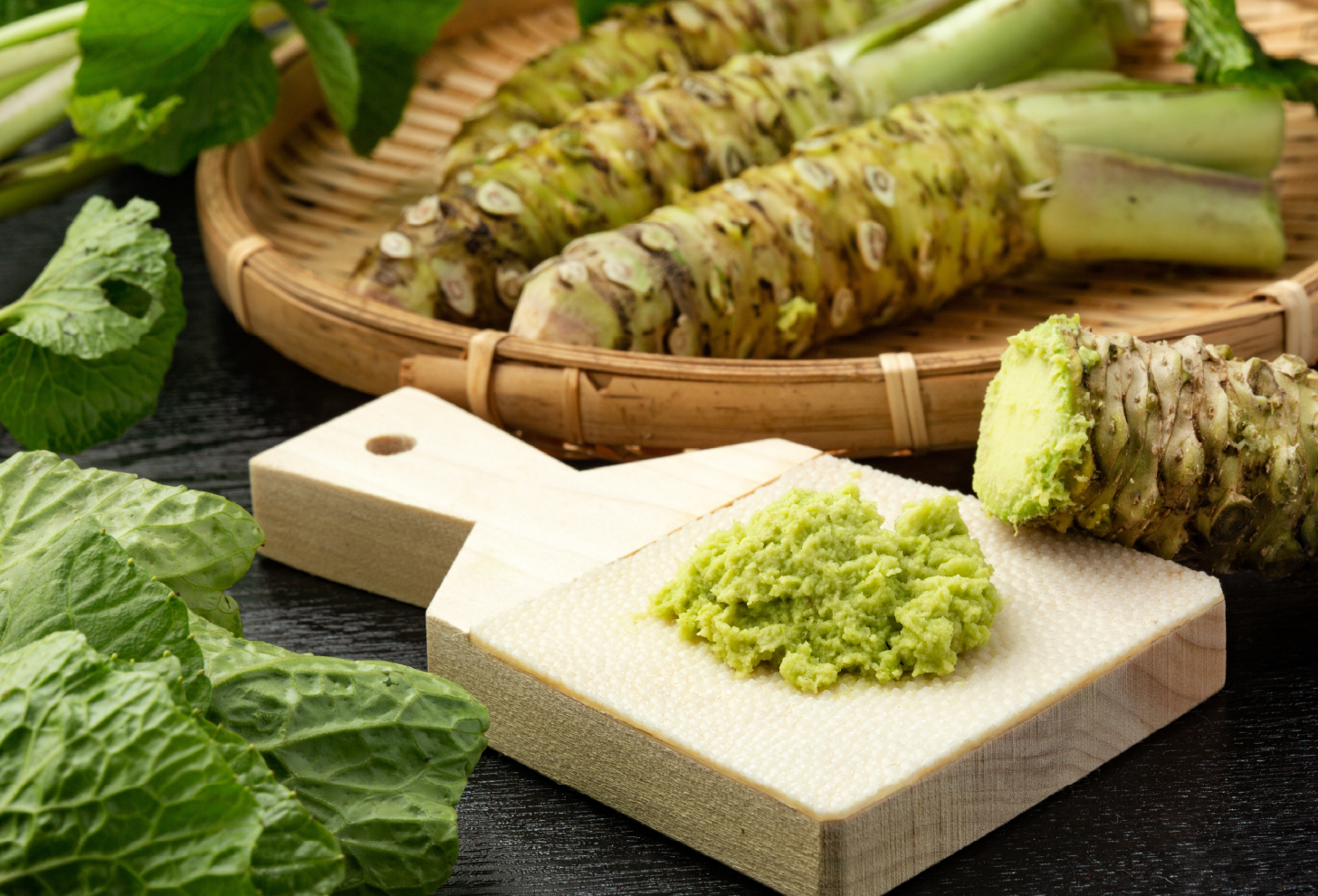
Why is AZUMINO
the Wasabi Town?
The expansive Azumino is located at the foot of the approximately 3,000 m elevation Japan Alps Mountain Range, featuring an abundance of water that has enriched both the land and lives of the people who live there. Snow from the Japan Alps melts and turns into underground water that eventually moistens the land of Azumino. The water’s transparency never fails to impress those who see it. Even in summer, the water feels cool and refreshing to the touch. “Wasabi” is the most renowned product of Azumino. Azumino proudly holds the title of being Japan’s number one producer of wasabi due to it having access to approximately 700,000 tons of water per day and a year-round stable temperature of about 13°C, which are the perfect conditions to grow wasabi. In Azumino, the Hotaka area is especially known for its thriving wasabi cultivation, and in the city, you can see fields of wasabi protected with black sunshades. So please come and see the wasabi, which can only be viewed like this in Azumino.

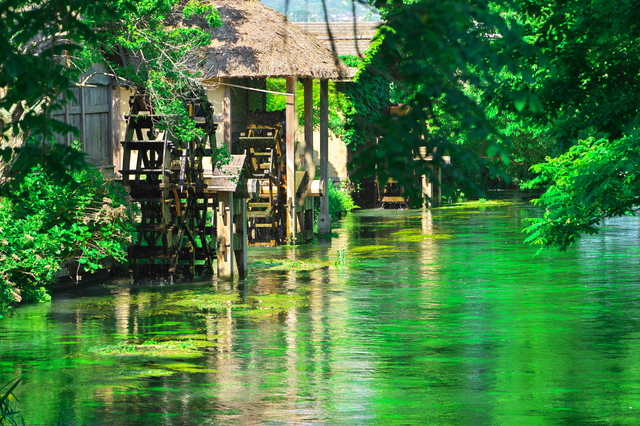
Japan’s Largest Wasabi Farm
Daio Wasabi Farm enjoys great popularity as a unique spot in Nagano and Japan as a whole. Beautifully clear water streams down from the Northern Japan Alps and into Azumino, allowing farmers to cultivate healthy, spicy wasabi. Hundreds of thousands of visitors both Japanese and from abroad flock to the farm every year to experience the nation’s largest wasabi farm firsthand and sample some authentic wasabi. Other wasabi-flavored goods, like beer and ice cream, are also available.
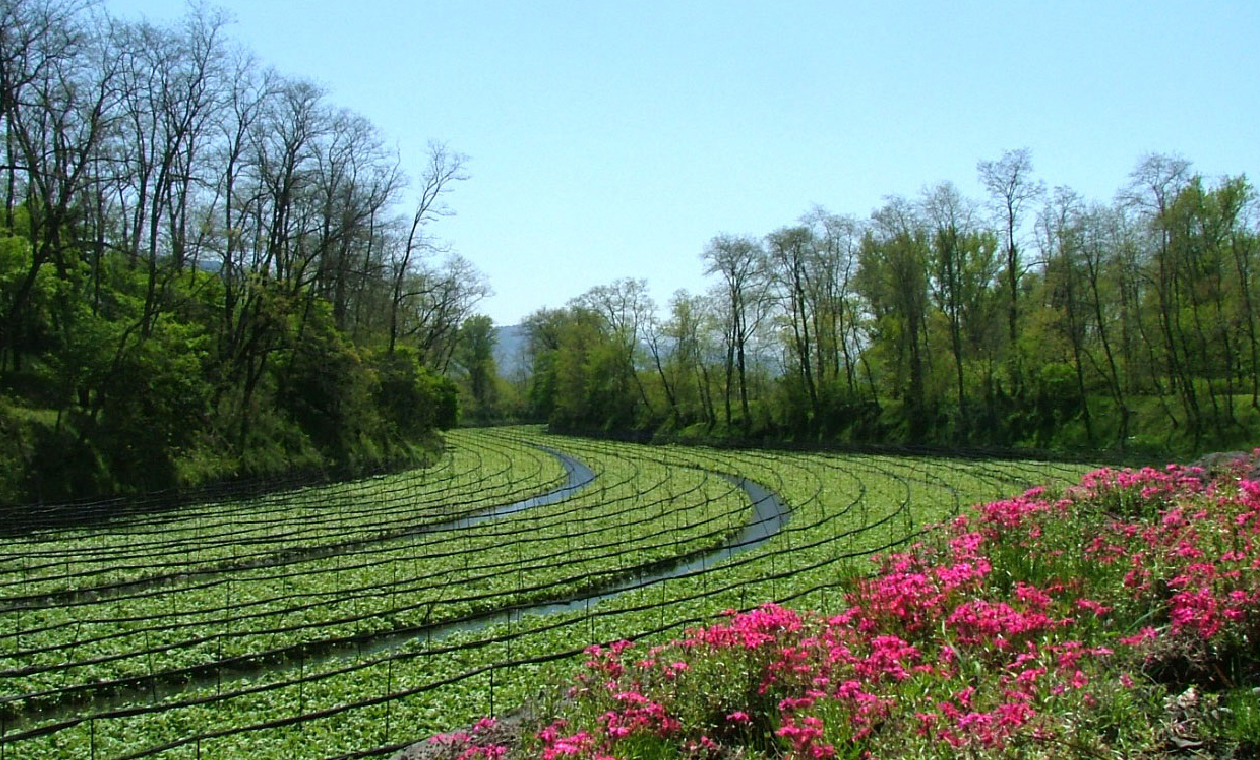
Wasabi
Wasabi is a root known as Japanese horseradish and commonly found in sushi as a paste. Because fresh wasabi is so perishable and expensive, fresh wasabi root is not common for home use. At Daio Wasabi Farm, visitors can taste real fresh wasabi and also get the rare opportunity to see how wasabi is grown on the farm. You can even try wasabi ice cream and wasabi beer.
Refer to Marui Wasabi’s website (Azumino-based wasabi factory. The has fun wasabi trivia and information about how to enjoy eating wasabi.)
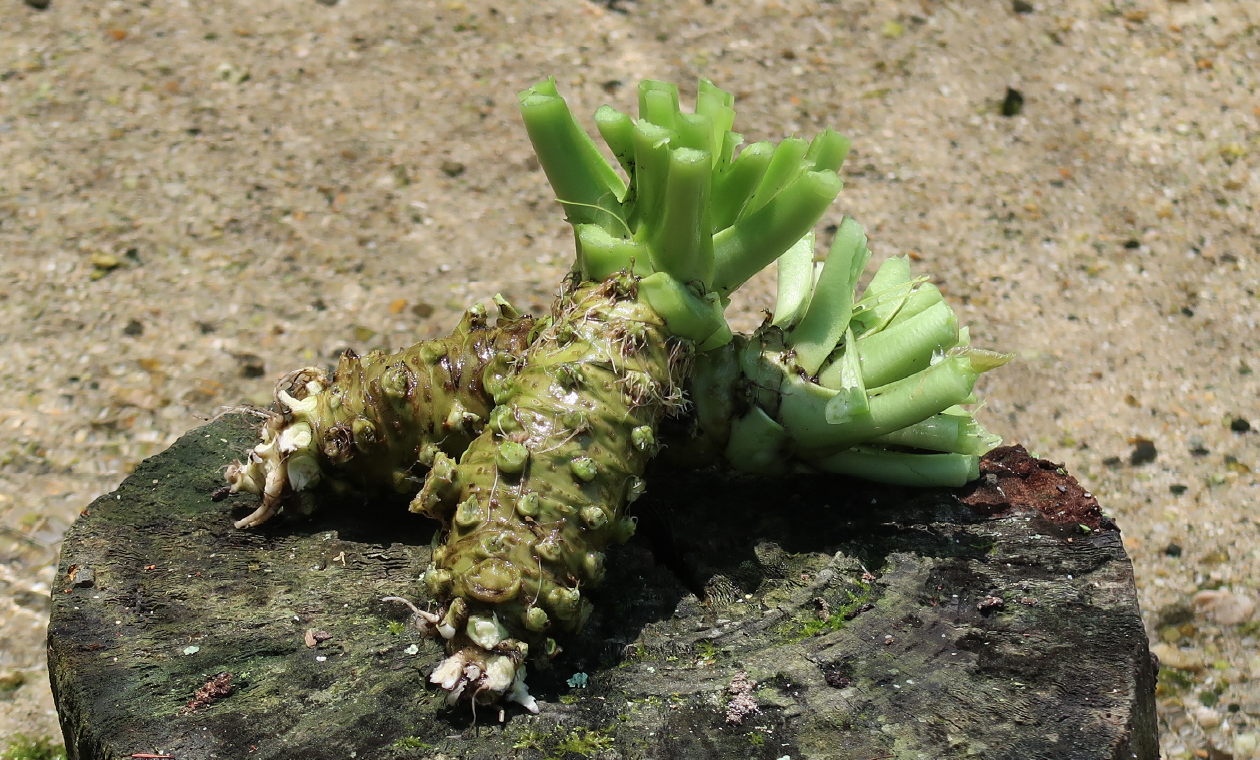
The Origins of Wasabi
Wasabi is a pungent green paste served as a condiment with many Japanese dishes, particularly sushi and sashimi. It comes from the thick part of the stem, or rhizome (not the root, a common misconception), of the Wasabia japonica plant, native to Japan. eye-watering, tongue-tingling effects are powerful but short-lived.
Like other botanicals, wasabi is thought to have first been consumed for its medicinal properties, with records suggesting it was used as far back as the Asuka period (552–645). A book from the Muromachi period (1336–1573) introduced wasabi as a condiment for sashimi, and as such it was a favorite among the wealthy and powerful. By the eighteenth century, it had become a standard accompaniment to the increasingly popular sushi. Cultivation in the Azumino area only began some 140 years ago, around the middle of the Meiji era (1868–1912).
About Azumino
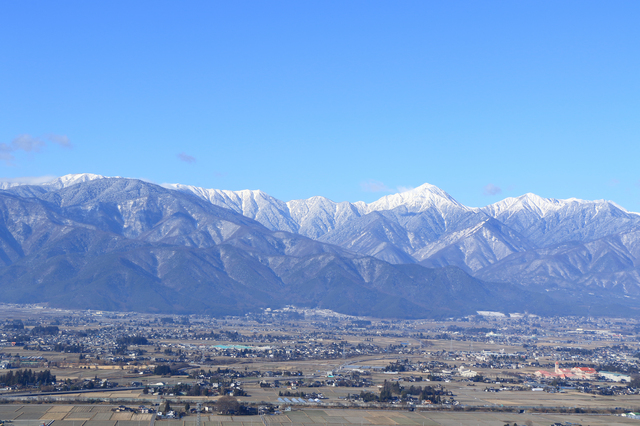
Northern Japan Alps
Nagano Prefecture is nestled among beautiful natural landscapes and a magnificent mountain range. The area is popular for mountain climbing and hiking, offering ever-changing seasonal scenery for you to enjoy. In particular, the vibrant foliage in fall and the stunning snowy landscapes of winter are especially captivating.
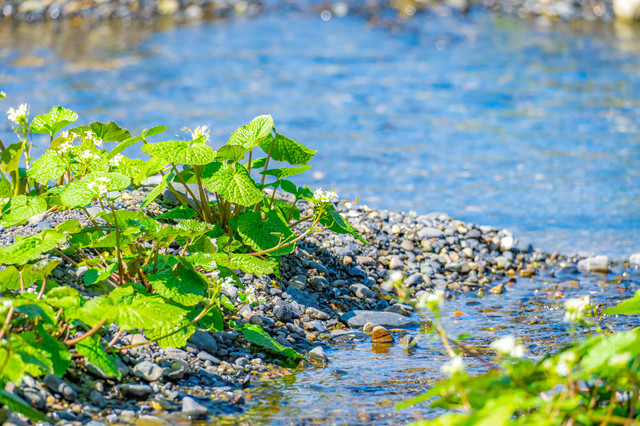
Spring Water
Azumino boasts the largest production of wasabi in Japan thanks to the abundant amount of spring water available, which maintains a stable temperature. The spring water in Azumino was also chosen as one of the top 100 famous waters in Japan. In addition, the Shinshu (Nagano) salmon that are raised in this clean water are known as a local culinary delight.
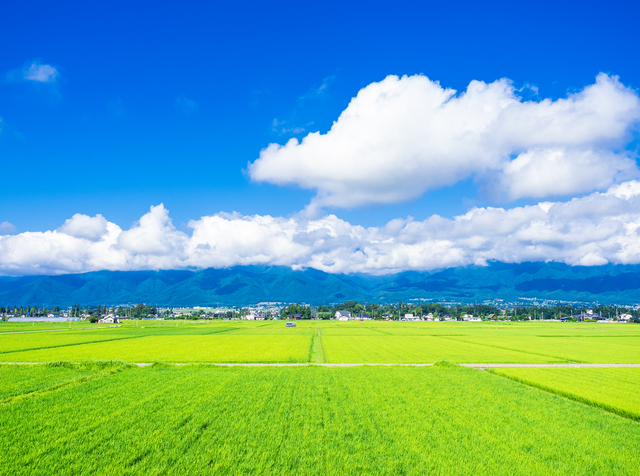
Rural Landscape
The rural landscape of Azumino features rice paddy fields with water that beautifully reflect the sky like “water mirrors” and an irrigation system, “Jikkasegi,” that was built 200 years ago and still continues to help support the fields even to this day.
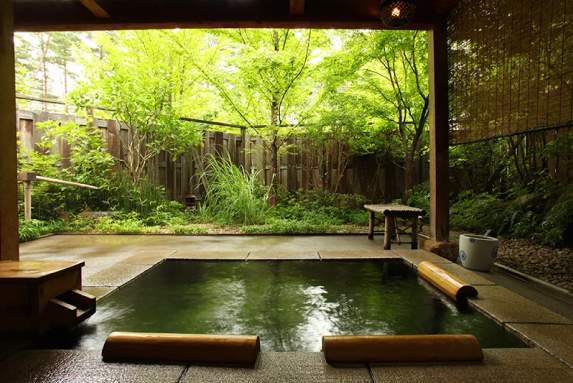
Hot Springs
Azumino is home to four hot spring locations, with Hotaka, Nakabusa, and Ariake standing out for their renowned beauty. These hot springs can be enjoyed as a day trip or even just for their relaxing foot baths.

Hiking
There are many beautiful natural sights for you to see. The magnificent mountain range of the Japan Alps stands at an elevation of over 3,000 m in the west, and you can see the stunning mountain scenery from the eastern mountaintops. The natural scenery is enjoyable throughout the seasons, and the area is known for being a popular location for mountain climbing and hiking. The cherry blossoms in spring, autumn foliage in fall, and snowy landscapes in winter are all especially stunning to see.
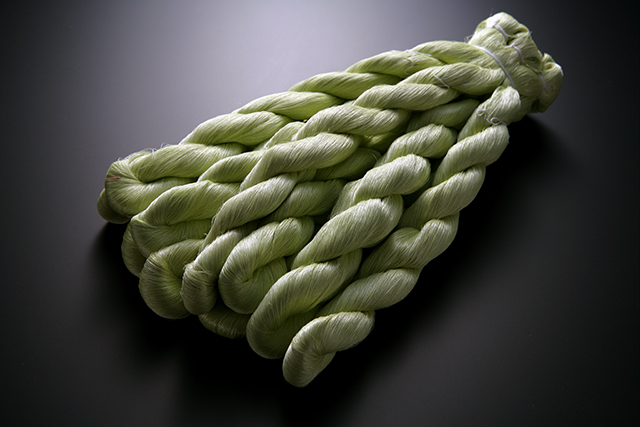
Tensan Silk
Tensan silk is harvested from the cocoons of a type of wild silk-producing silkworm moth. The Tensan silk of Azumino is a natural, high-quality material, also known as “Diamond Fiber.”

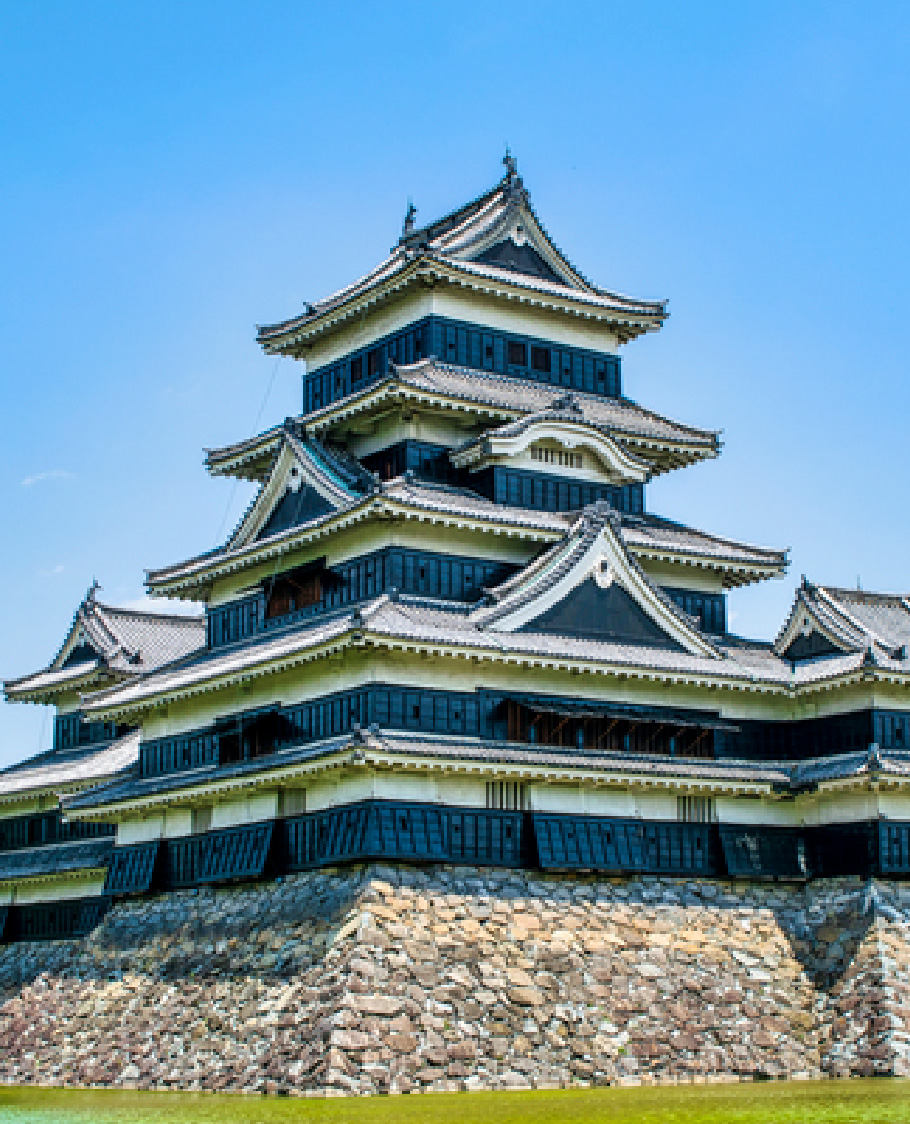
Located near Matsumoto
and Hakuba
Just 3 hours away from Tokyo. Matsumoto, Takayama, Snow Monkeys, Hakuba, and a wealth of other popular sightseeing spots are also located near Azumino.
Local Specialties
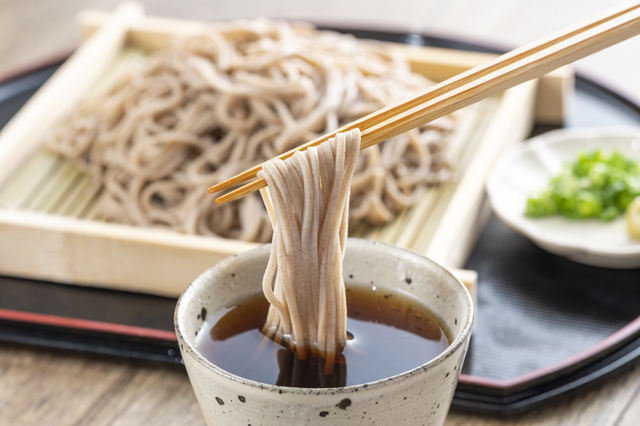
Soba (Buckwheat Noodles)
A specialty in Nagano prefecture, soba is a thin noodle made from buckwheat flour. Azumino’s handmade soba is highly regarded throughout the region and can be found in many soba restaurants all over Azumino.
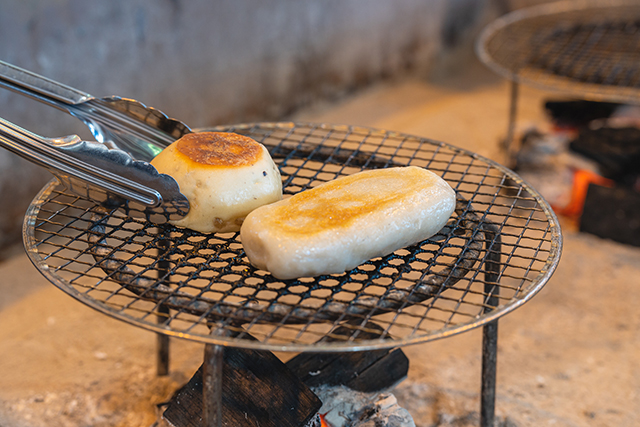
Oyaki
Oyaki is a buckwheat or wheat bun specialty even more local to Nagano prefecture than soba. The buns are stuffed with a huge variety of fillings including vegetables or sweet bean paste. You can get oyaki in many shops and restaurants throughout Azumino.
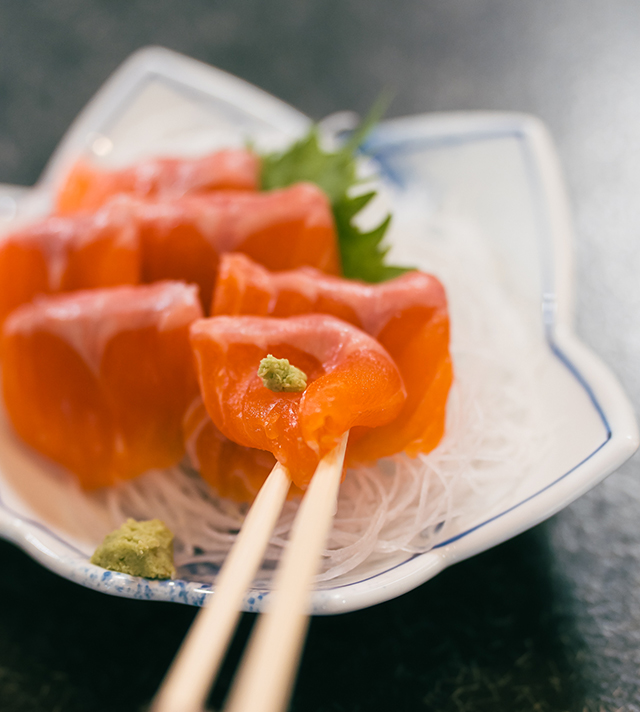
Shinshu Salmon
Shinshu Salmon is a treat which is hard to find outside of Azumino. A hybrid fish of brown trout and rainbow trout, Shinshu Salmon is a fish distinct to Nagano and has a rich and deep savory flavor. Many restaurants serve Shinshu Salmon rice bowls.
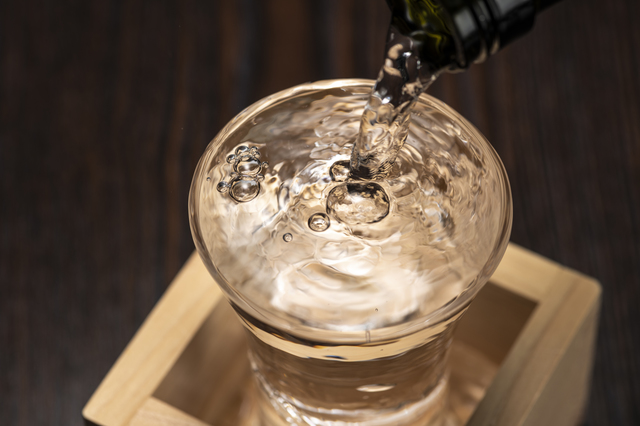
Sake
Sake is a fermented alcoholic beverage made from rice. It is said that good water and good rice make good sake. Azumino sake, which has both elements, is available in local shops and is served in many restaurants.

Wine
Japanese wine often has its own unique flavor, categorization process, and grape varieties. Swiss Village Winery and Azumino Winery offer tours, wine tastings, and a retail store for visitors interested in local Azumino wine.
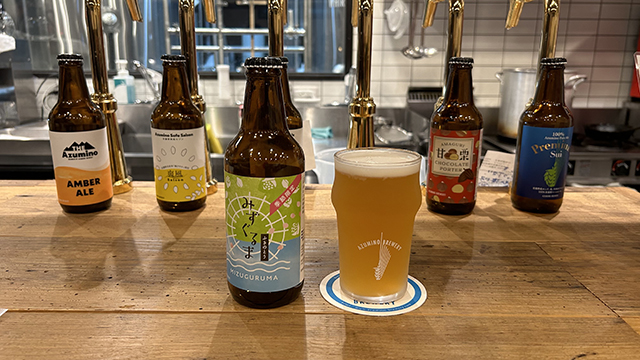
Craft beer
Craft beer made by local farmers and long-established confectionery makers. Brewed with pure spring water from the Japan Alps, using locally grown ingredients. At breweries, shops, and restaurants in Azumino, you can enjoy a variety of richly flavored beers that pair perfectly with meals.
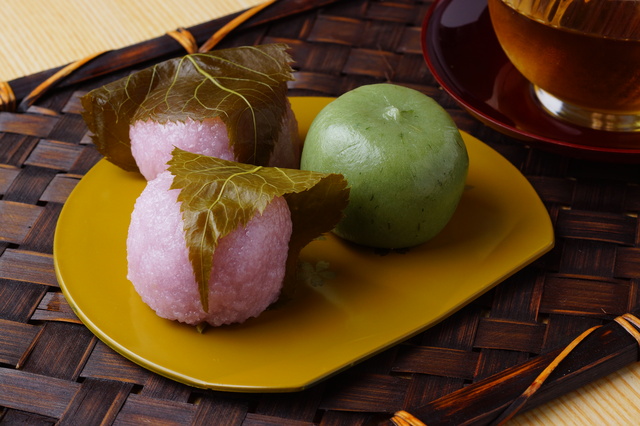
Wagashi (Japanese Sweets)
Wagashi refers to traditional Japanese confectionery. Japanese sweets use uncommon flavors and natural ingredients that are unparalleled in presentation and often healthier than sweets found in other cuisines. Many confectionery shops in Azumino offer specialty and standard styles of wagashi throughout the year.

Soft-serve Ice Cream and Gelato
Made with locally sourced fresh milk and fruit, this treat is known for its rich, creamy texture. We also recommend trying Azumino’s specialty—wasabi soft-serve ice cream!
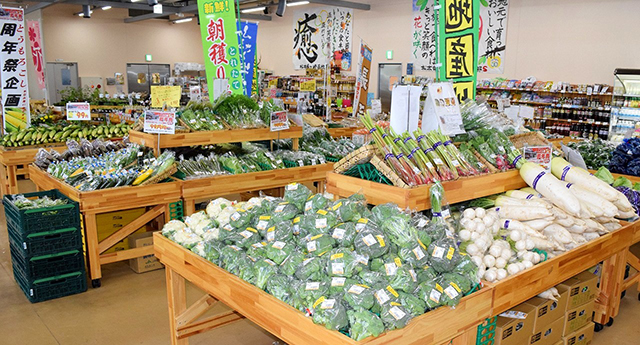
Farmers' Market
A cozy shopping spot offering fresh vegetables and fruits grown by local farmers, along with seasonal delicacies and handmade goods. There are several locations throughout Azumino.


